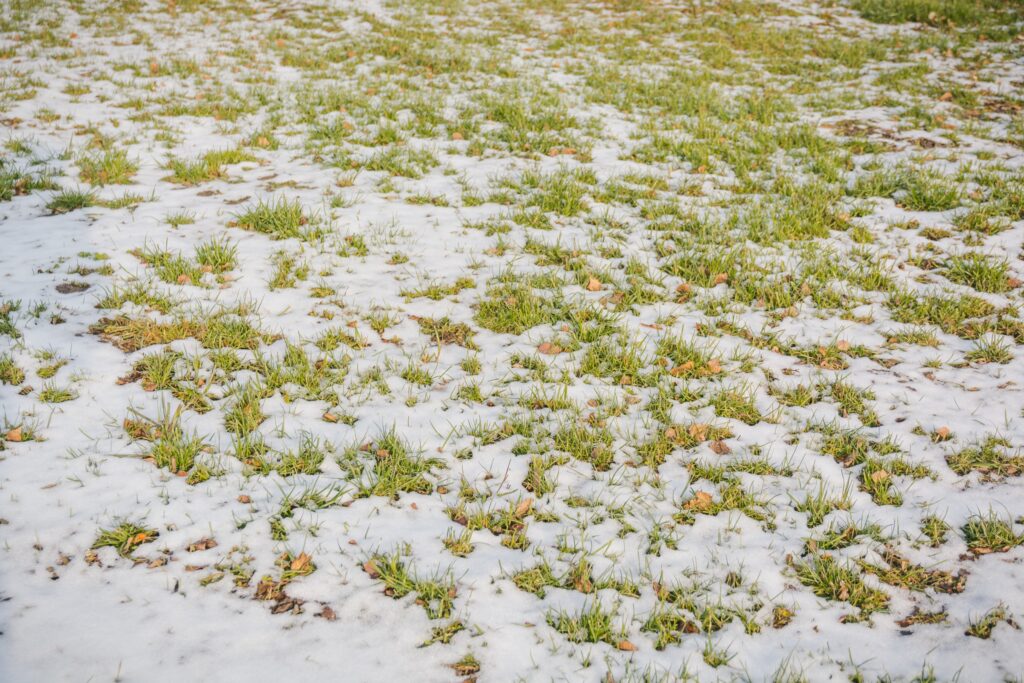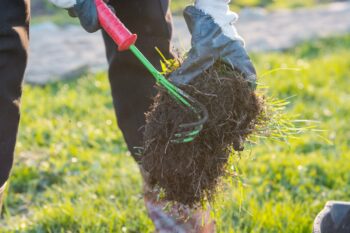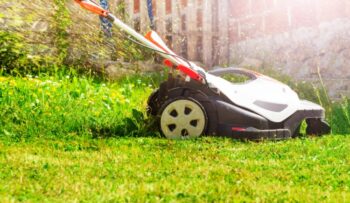As the winter months approach, many homeowners may breathe a sigh of relief, assuming that lawn fungal diseases will disappear with the cold temperatures. However, the reality is not that simple.
While some fungi may be less active or visible during winter, many fungal diseases have developed mechanisms to survive even the harshest winter conditions.
Lawn fungal diseases, such as snow mold, dollar spot, and red thread, can wreak havoc on the health and appearance of your lawn. It’s crucial to understand the survival tactics employed by these fungi and how to mitigate their impact, even in colder weather.
So let’s dive in and find out, does lawn fungus die in the winter?
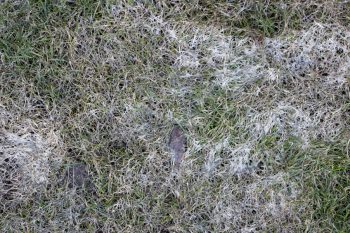
Snow Mold: A Persistent Winter Fungus
We don’t a lot of snow in North Texas, but we do get some. Which is why it is important to arm yourself with knowledge about winter fungal diseases in case your lawn becomes infected.
Snow mold affects fescues, bluegrass, and ryegrasses. Most North Texas homeowners have Bermuda, St. Augustine, or Zoysia turfs, which are not affected by snow mold. Snow mold is an issue for homeowners that overseed with fescues, bluegrass, or ryegrass.
Snow mold is a common lawn disease that thrives under a protective layer of snow, making it a significant concern for regions with prolonged snow cover. There are two types of snow mold: gray snow mold (Typhula blight) and pink snow mold (Microdochium patch).
Gray snow mold survives winter temperatures by going dormant in the thatch layer or soil beneath the snow. When the snow melts in spring, gray patches of matted grass may become visible. Pink snow mold, on the other hand, remains active and can continue to grow beneath the snow, causing damage to the turf.
Dollar Spot and Red Thread: Tough Survivors
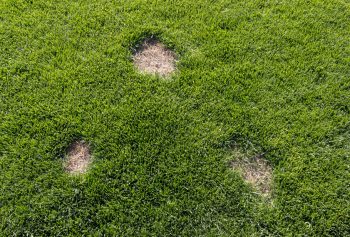
Dollar spot and red thread are fungal diseases that commonly afflict lawns during warm seasons but can also persist into the winter.
These fungal pathogens survive in grass and thatch debris during colder months, waiting for favorable conditions to re-emerge in spring.
They may appear as dormant patches or continue to cause damage during mild winter periods.
Mitigating Fungal Diseases in Winter
While lawn fungi can survive the winter, there are steps you can take to minimize their impact:
Lawn Care Before Winter: Proper lawn care practices throughout the year, such as adequate fertilization, regularly mowing at the correct height, and proper watering, can help strengthen your lawn and reduce the risk of fungal diseases. Read this article, “Seasonal Lawn Care: From Winter to Spring.”
Raking and Clean-up: Thoroughly rake and remove fallen leaves, grass clippings, and other organic debris from the yard before winter. These materials can provide shelter and a breeding ground for fungal spores.
Aeration and Dethatching: Promote airflow and reduce thatch buildup by aerating and dethatching your lawn in late summer or early fall. This practice helps prevent fungal diseases by improving drainage and reducing moisture retention.
Fungicide Treatment: In severe cases or if you have a history of lawn fungal diseases in your yard, consider applying a preventive fungicide treatment in late fall. Consult with a lawn care professional or local garden center for the most suitable fungicide for your specific needs.
Cultural Practices: During winter, it’s essential to avoid piling heavy snow on your lawn and to discourage foot traffic on frozen turf. These actions can help prevent snow mold and other winter fungal diseases from thriving.
Read one of our other articles titled, “Winter Lawn Care Tips.”
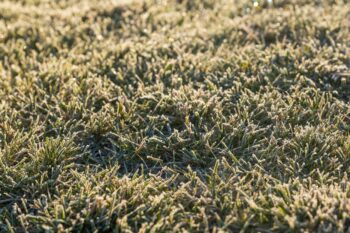
Seeking Professional Advice
If you are uncertain about the condition of your lawn or require specific guidance on lawn care practices during winter, it is best to consult with a professional lawn care service.
They can assess your lawn’s health, identify any existing or potential fungal issues, and provide tailored recommendations to ensure the best possible care for your grass.
Check out our full service lawn care service page.
Wrapping Up
Hopefully, after reading this blog post we have answered the question, does lawn fungus die in the winter? While some lawn fungal diseases may be less active or visible during winter, they can still survive and cause damage to your lawn.
By understanding the survival mechanisms of these fungi and implementing proper lawn care practices, you can minimize the impact of winter fungal diseases and set the stage for a healthy, vibrant lawn come spring.

